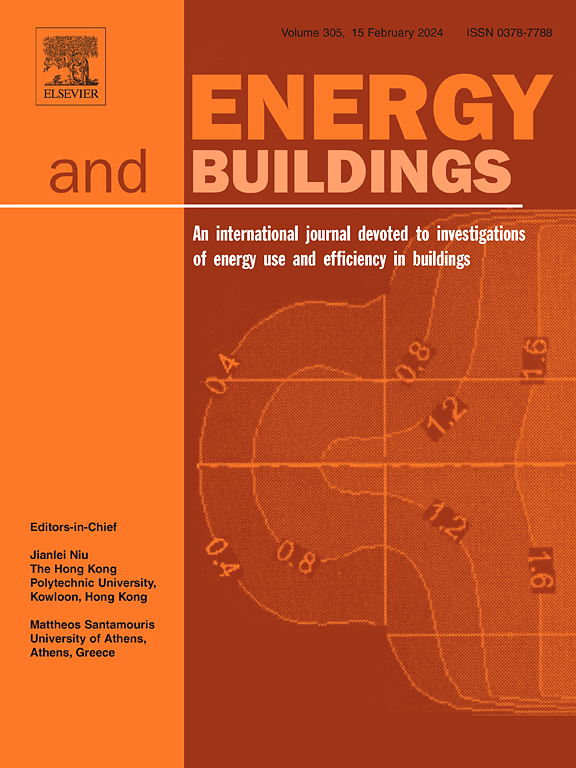A study of occupant performance under varying indoor thermal conditions during summer in India
IF 6.6
2区 工程技术
Q1 CONSTRUCTION & BUILDING TECHNOLOGY
引用次数: 0
Abstract
Occupant thermal responses vary significantly across different climatic regions, even under similar indoor thermal conditions, due to climate-specific thermal adaptations. These climate-specific adaptations can lead to discrepancies in performance outcomes. Therefore, climate-specific performance evaluation in varying thermal conditions is crucial, particularly in India, where the thermal adaptation range is higher due to adaptation towards higher outdoor summer temperatures. In the present study, forty-eight students were subjected to four air temperatures (24 °C, 27 °C, 30 °C, and 33 °C), each paired with three distinct air velocities (0.2 m/s, 0.7 m/s, and 1.2 m/s), in the fan-assisted cooling laboratory. A subjective questionnaire assessed thermal comfort, emotion, and well-being, whereas neurobehavioural tests were used to quantify the performance. The result illustrates that higher air velocity can maintain thermal comfort up to 30 °C. Four out of twelve thermal conditions (24 °C with 0.2 m/s, 27 °C with 0.7 m/s, 27 °C with 1.2 m/s and 30 °C with 1.2 m/s air velocity) drew a ‘slightly cool to neutral’ thermal sensation, which is in acceptable thermal comfort band. In this band, the maximum number of subjects reported satisfactory well-being, maximum positive emotion, and minimum negative emotion. No appreciable change in cognitive performance was observed in this band, indicating that increasing air temperature and velocity did not affect cognitive performance as long as thermal comfort was maintained. These results can help delineate temperature setpoint policies for Indian summers without affecting performance.
求助全文
约1分钟内获得全文
求助全文
来源期刊

Energy and Buildings
工程技术-工程:土木
CiteScore
12.70
自引率
11.90%
发文量
863
审稿时长
38 days
期刊介绍:
An international journal devoted to investigations of energy use and efficiency in buildings
Energy and Buildings is an international journal publishing articles with explicit links to energy use in buildings. The aim is to present new research results, and new proven practice aimed at reducing the energy needs of a building and improving indoor environment quality.
 求助内容:
求助内容: 应助结果提醒方式:
应助结果提醒方式:


